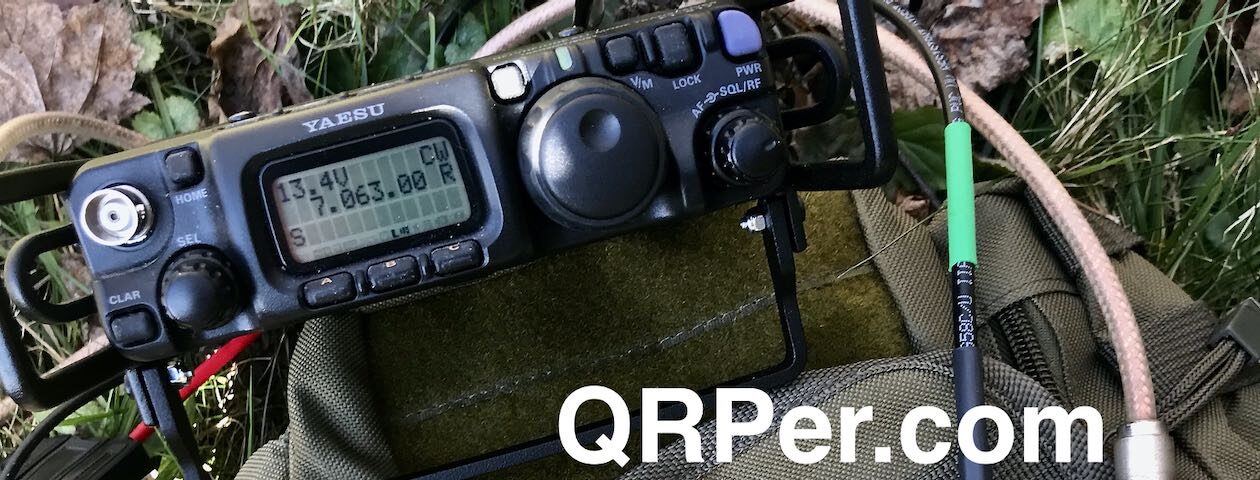 For the past four days here at my mountain QTH in North Carolina, I haven’t seen the sun. The cloud ceiling has been low and our house has been in the middle of it. It’s been rainy and foggy with temps floating a few degrees above freezing.
For the past four days here at my mountain QTH in North Carolina, I haven’t seen the sun. The cloud ceiling has been low and our house has been in the middle of it. It’s been rainy and foggy with temps floating a few degrees above freezing.
Last Tuesday (February 9, 2021), however, we had one day with glorious weather and I’m so pleased I carved out 90 minutes to perform a park activation on my way back home from a short trip.
I picked Lake James State State Park (K-2739) because it’s such a short detour and has numerous spots where I could set up my gear.
The temperature was a truly balmy 60F/15.5C–possibly even a tad higher.
Lake James State State Park (K-2739)
On my way to Lake James, I knew I’d use my Elecraft KX2 (it was the only transceiver I had on this trip) but debated what antenna to deploy. I chose the Chameleon MPAS 2.0 vertical antenna because, to my knowledge, I had never paired it with the KX2 and I enjoy shaking up my transceiver and antenna combos.
Gear:
- Elecraft KX2
- Chameleon CHA MPAS 2.0
- CW Morse “Pocket Paddle”
- Red Oxx C-Ruck
- Bioenno 3 aH LiFePo Battery (Model BLF-1203AB)
- Ham Radio Workbench DC Distribution Panel
The brilliant thing about antennas like the CHA MPAS 2.0 is how quick they are to deploy: it takes me all of three minutes or so.
On the air
 Since the Elecraft KX2 has a built-in battery and built-in ATU, I basically connected the radio directly to the antenna and was on the air in moments.
Since the Elecraft KX2 has a built-in battery and built-in ATU, I basically connected the radio directly to the antenna and was on the air in moments.
The CHA MPAS 2.0 is the vertical equivalent of a random wire antenna: it’s not resonant on any one frequency and requires an antenna tuner to achieve a good SWR.
As I mentioned in the video (below) I always keep my expectations low when deploying a vertical antenna in areas like western North Carolina where ground conductivity is poor.
Maybe the antenna decided to prove me wrong, because I hopped on 20 meters CW and logged a number of stations across the country including Washington state and British Columbia with a measly five watts.
It also happened that my buddy and fellow POTA activator, Steve (KC5F), was just down the road activating another site in the same county. It’s rare that Steve and I can work each other because, typically, we’re too close for skywave propagation and too far for ground wave. Not this time! We were close enough for ground wave on multiple bands–it was great fun working him park-to-park on every band I tuned.
I moved from 20 meters to 17 meters, to 30 meters, 40 meters and back up to 20 meters SSB.
The great thing about using the MPAS 2.0 is how incredibly easy it is to pick up and move from band-to-band–there’s no manually tuning a coil or changing links on a multi-band diplole. In fact, the MPAS 2.0 covers 160-6 meters, so I’ve lots of options if band conditions are wonky.
Video
Here’s an unedited video of the entire activation:
Click here to view on YouTube.
In the end, here’s how my QSOmap looked with 32 stations logged:
 I look back at activations like this and am reminded of the magic of HF radio. It’s truly phenomenal, in my mind, that with less power than it takes to light an LED bulb, I can make contacts across the continent pretty effortlessly–CW or SSB–even during the solar doldrums! Good fun!
I look back at activations like this and am reminded of the magic of HF radio. It’s truly phenomenal, in my mind, that with less power than it takes to light an LED bulb, I can make contacts across the continent pretty effortlessly–CW or SSB–even during the solar doldrums! Good fun!
In other news, my ankle is healing nicely and once this cycle of nasty weather clears, I’m looking forward to putting some SOTA sites on the air!
How about you? Do you have any field radio plans? Has the weather or C-19 lockdowns gotten in the way? Please comment!


